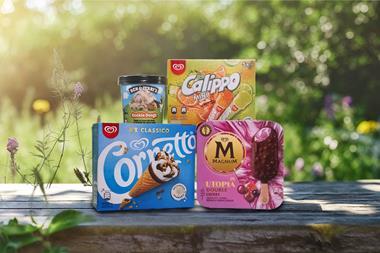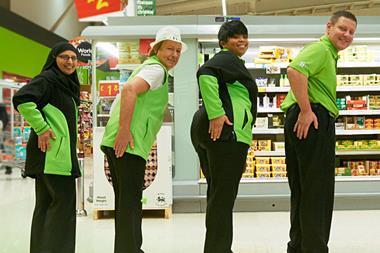Forty years ago today, the retail industry adopted the GS1 bar code as the standard for identifying and tracking products.
Now used worldwide, bar codes have become part of the retail landscape: that familiar beep sounds some five billion times a day.
The GS1 system is founded on a set of global identification numbers. Each country has its own number, which provides the basis for a common retail language. GS1 UK, the not-for-profit company that administers the system, estimates that, by creating efficiencies in the supply chain, it saves the UK retail industry £10.5bn a year. But the system didn’t fall into place overnight.
“There was a big gap from when the barcode patent was made in 1952,” says GS1 UK CEO Gary Lynch. “It took until 1973 until the industry came together – firstly in the US.”
The first item scanned in the US was a packet of Wrigley’s Juicy Fruit chewing gum in 1974. The UK had to wait until 1978, when the first product scanned was a box of Melrose teabags. “At first wine companies refused to allow bar codes because they said their bottles were ‘table decoration’,” says Lynch.
The system replaced the label gun, which enatiled staff typing in numbers manually. “It was a massive undertaking,” says Lynch of the system’s launch. “There was some pushback at the time – people didn’t believe it was as accurate as typing it in.” In fact, GS1 UK claims bar codes are 10,000 times more accurate than entering product data manually.

It’s not just shop staff who scan bar codes now, but consumers too. The first self-scanning store in the UK was Safeway in Solihull, which came online in March 1995.
In the last 40 years GS1’s system of standards has expanded to include RFID tags and GS1 DataBar, the next-generation version of the GS1 Bar Code, which contains more information and can be placed on smaller items such as pieces of fruit.
“People are becoming far more aware of their own likes and dislikes. They’re savvy digital shoppers”
“We have broadened out into food service and, increasingly, healthcare,” Lynch says. “Stuff retailers created is now being used to count patients and medicines.” GS1 says the NHS saves £2.7bn a year by using bar codes and adding data such as batch numbers and expiry dates to packaging of pharmaceuticals and medical devices.
GS1 now has branches in 111 countries, while its standards are applied in 150. “This organisation’s membership has gone from 15,000 nine years ago to 27,000 today in the UK,” says Lynch, adding that around 300 new members sign up to GS1 UK each month. “Sixty percent of those are online retailers – they wouldn’t have existed five years ago.”
Looking ahead, Lynch sees huge potential for the type of technology GS1 promotes in smartphones, for example in apps that can scan products for data on ingredients, allergies and environmental footprint.
“People are becoming far more aware of their own likes and dislikes,” he says. “They’re savvy digital shoppers. It all comes back down to having a unique identifier for something. You scan it and it will tell you what it is.”
















1 Readers' comment